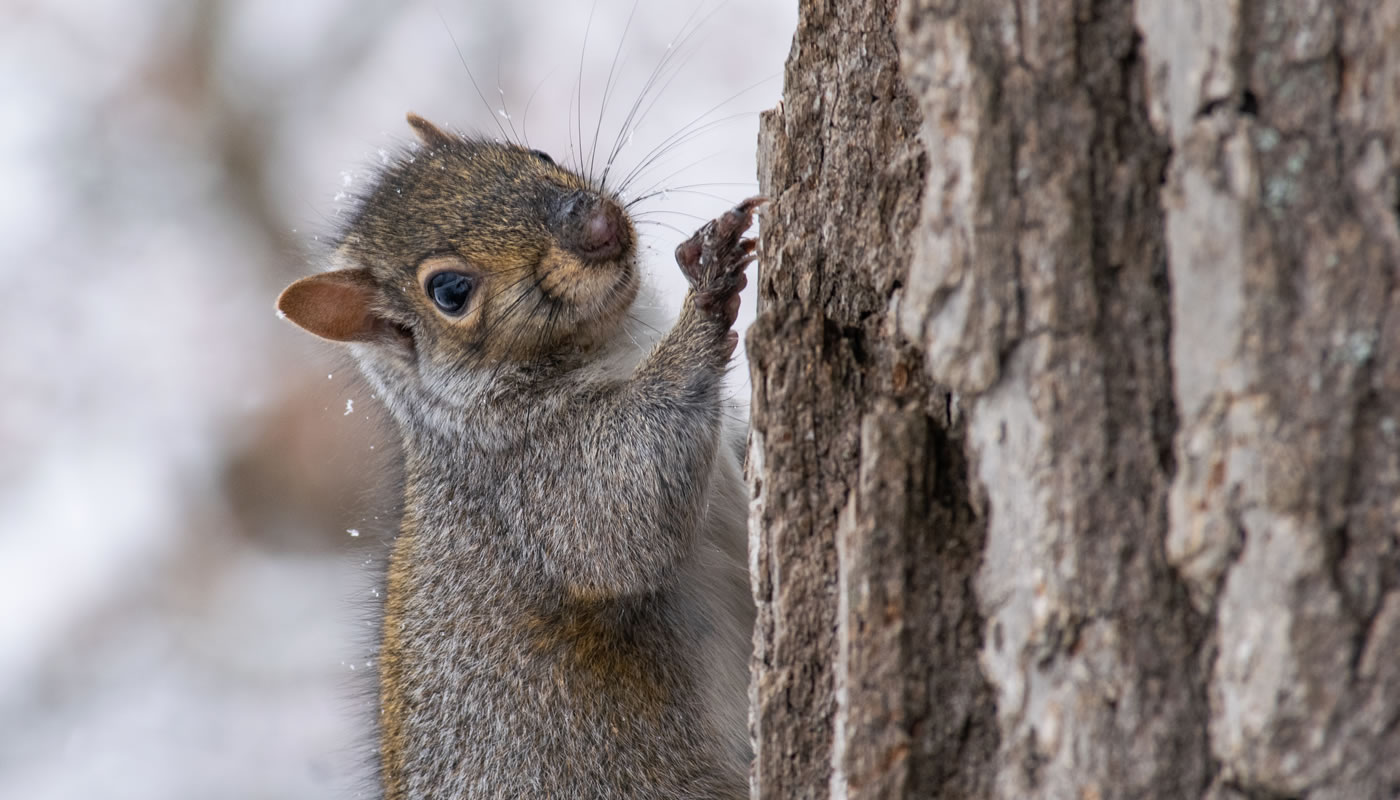Surprisingly, your backyard birdfeeder isn’t part of a tree squirrel’s natural habitat. Luckily, the Forest Preserves of Cook County offer opportunities to see these critters in the wilderness as they scamper over fallen logs and glide between the trees.
In honor of Squirrel Appreciation Day, celebrated annually on January 21, check out these seven facts about our bushy-tailed friends:
1. Four Squirrel Species Grace Cook County’s Landscape
The eastern gray, fox and flying squirrels are the most common species of tree squirrel in Cook County, according to naturalist and Trailside Museum of Natural History’s assistant director Irene Flebbe. The occasional red squirrel may also be seen scampering among pines on the southern edge of Cook County. Overall there are over 120 species of tree squirrel worldwide.
2. Squirrel Parents are Busy
According to Flebbe, a squirrel family lives in a tree cavity, or in a leaf nest called a “dray.” Squirrels in Cook County usually have two litters of young, one in early spring and one in late summer when food, such as springtime buds or autumn seeds and nuts, are most abundant.
3. Squirrels Rarely Need a Dentist
Squirrels are rodents, which means their incisors grow continuously. The little mammals need to gnaw in order to keep their pearly whites at a safe and effective level. “Rodents have ever-growing teeth perfect for opening nuts and seed,” says Flebbe.
4. Squirrels Can Mutate
Squirrels can deviate from their natural grey and red colorations to include black and white thanks to natural genetic mutations, according to Flebbe. Melanism causes squirrels to be black, and albinism, or leucism – a less drastic change, cause them to be white. “Albino or leucistic squirrels don’t live as long because they become easy-to-see prey for foxes, coyotes or hawks,” explains Flebbe.
5. “Uptown” Squirrel
According to National Geographic, squirrels were introduced to urban environments to create and sustain an appreciation of nature in city dwellers. Cities such as Boston, New York City and Philadelphia established populations of eastern grey squirrels in municipal parks to inspire an adoration of public green spaces in the mid-19th century. The idea quickly spread across the country.
6. The Cold Doesn’t Bother the Squirrels Anyways
Tree squirrels don’t hibernate like some of their ground-dwelling counterparts. Flebbe says Cook County’s tree squirrels might hang out inside their dens (much like us!) in extreme cold but remain relatively active throughout the winter.
7. Squirrels are Expert Arborists
Squirrels often forget where they stash some of their nuts. Their forgetful foraging results in springtime tree saplings. Though the squirrels themselves don’t know that they are quite the arborists, their positive environmental impacts are felt throughout the region.

